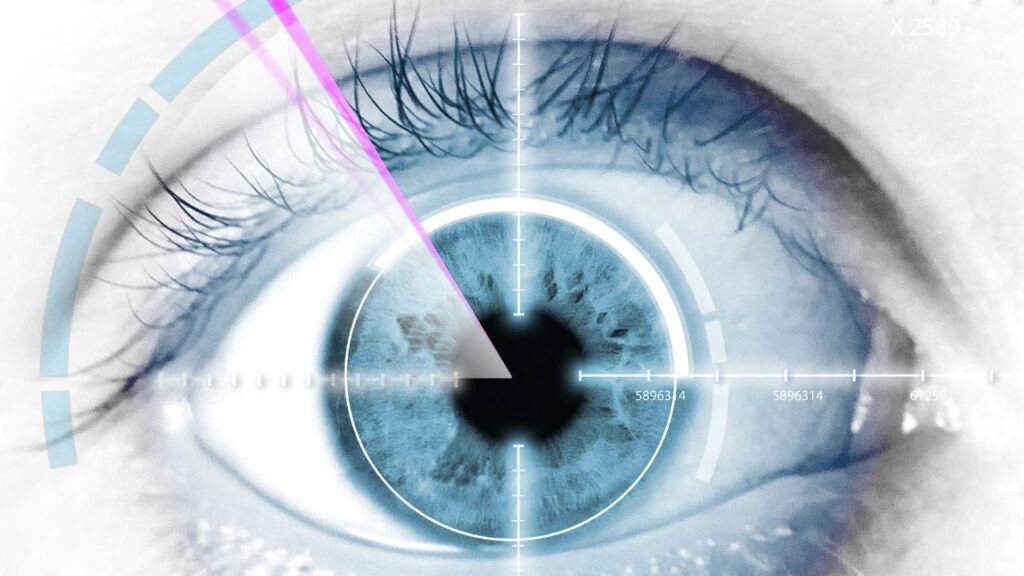LASIK Surgery Age Limit: LASIK (Laser-Assisted in Situ Keratomileusis) is a widely performed vision correction procedure that reshapes the cornea to treat refractive errors such as myopia, hyperopia, and astigmatism. The treatment is quick, safe, and effective, often taking less than 15 minutes per eye with minimal discomfort and no stitches required. Over the past two decades, LASIK technology has advanced significantly, making it one of the safest and most precise medical procedures worldwide.

If you want to confirm your exact age before planning your eligibility for LASIK, you can check it instantly using the Easy Age Calculator.
Expert Opinion: Can LASIK Make You Blind?
In a recent podcast, Dr. Rahil Chaudhary, a renowned ophthalmologist at Eye7 Eye Hospitals and Guinness World Record-holding LASIK surgeon, addressed one of the most common fears associated with LASIK surgery: Can it cause blindness?
Dr. Rahil clarified that this belief is entirely false. According to him, modern LASIK systems are among the safest surgical procedures available today. He emphasized that over the past twenty years, LASIK has evolved from basic laser correction to AI-powered vision systems like Ray-Tracing LASIK, offering unmatched accuracy and safety.
He explained that LASIK only reshapes the outermost layer of the cornea and does not interfere with the retina or the optic nerve, which are responsible for transmitting visual information to the brain. Therefore, the risk of blindness is virtually zero.
Dr. Rahil confidently stated:
“When I say nobody can go blind with LASIK, I mean it with 200% guarantee.”
This assurance highlights the level of precision and safety modern ophthalmology has achieved in laser-based vision correction.
Ideal Age for LASIK Surgery
Most ophthalmologists recommend undergoing LASIK once vision becomes stable typically after the age of 18. The ideal window for achieving the best long-term results, however, is between 21 and 40 years. During this period, the cornea is strong and healing capacity is optimal.
After the age of 40, natural eye changes such as presbyopia may occur, making it necessary to consider alternative procedures like monovision LASIK or lens-based treatments depending on the patient’s visual needs and corneal health.
Scientific Evidence: How Age Affects LASIK Outcomes
A recent study published in BMC Ophthalmology evaluated 240 untreated eyes and 182 post-treatment eyes across various age groups using iTrace aberrometry. The objective was to analyze higher-order aberrations and spherical aberration following LASIK and cataract surgeries.
The research revealed that aging increases internal spherical aberration, leading to subtle vision changes over time. In LASIK procedures, managing peripheral spherical aberrations improved overall vision quality, while adjustments in the central cornea helped address presbyopic issues.
Key Research Findings
Research shows that aging is associated with a reduction in myopic refraction (p = 0.0001), indicating that natural changes in vision occur as people grow older. Additionally, internal spherical aberration increases with age (p = 0.0001), which can subtly affect the overall quality of vision.
In patients undergoing LASIK surgery, the study found that post-LASIK corneal aberrations improved when advanced algorithms such as Supracor LASIK were used (p = 0.001), demonstrating the effectiveness of modern laser techniques in optimizing corneal optics.
For patients receiving cataract surgery, the research indicated that internal aberrations were lower in those with aspheric intraocular lenses (IOLs), such as EnVista and Tecnis, compared to traditional spherical IOLs (p = 0.00), resulting in better visual outcomes, especially for patients with larger pupils.
These findings confirm that while natural aging affects visual optics, modern LASIK algorithms can effectively minimize optical errors and improve clarity across all age groups.
Risks and Considerations by Age Group
- Ages 18–20: Vision may still be changing; surgery is usually delayed until stability is confirmed.
- Ages 21–40: Considered the optimal period for LASIK with fast recovery and lasting outcomes.
- Ages 41–50: Presbyopia may begin; customized procedures like monovision LASIK can be considered.
- Ages 50 and above: Cataract formation and thinner corneas become common; lens replacement may be preferred.
Recovery and Aftercare
Most patients notice clearer vision within 24 hours after LASIK. Initial dryness or mild irritation is common but temporary. Recovery typically follows this pattern:
- Day 1: Significant improvement in vision; mild discomfort possible.
- Week 1: Patients can usually return to normal activities.
- Month 1: Vision stabilizes, dryness subsides.
- 3–6 months: Full recovery and final vision outcome achieved.
Patients are advised to use prescribed lubricating drops, avoid rubbing their eyes, and attend all follow-up visits for monitoring corneal healing.
LASIK surgery has become one of the most reliable and precise methods for vision correction, supported by decades of medical research and technological innovation.
Studies confirm that younger adults (21–40 years) experience the best outcomes, but advancements in AI-guided laser technology and aspheric lens design have expanded options for older patients as well.
As experts like Dr. Rahil Chaudhary emphasize, the fear of going blind from LASIK is outdated. With proper evaluation by a qualified ophthalmologist, LASIK remains a safe, accurate, and life-changing procedure for millions worldwide.
FAQs
Is there an age limit on LASIK eye surgery?
No strict upper limit exists, but vision stability and corneal health determine candidacy. Patients over 50 may require lens-based alternatives.
Does LASIK surgery have an age limit?
While there’s no exact cutoff, the procedure is most effective between 21–40 years, with adjustments possible for older adults.
What is the age limit for LASIK surgery?
Ophthalmologists generally consider 21–40 years as ideal, but modern LASIK techniques allow safe correction for many patients in their 50s and 60s.